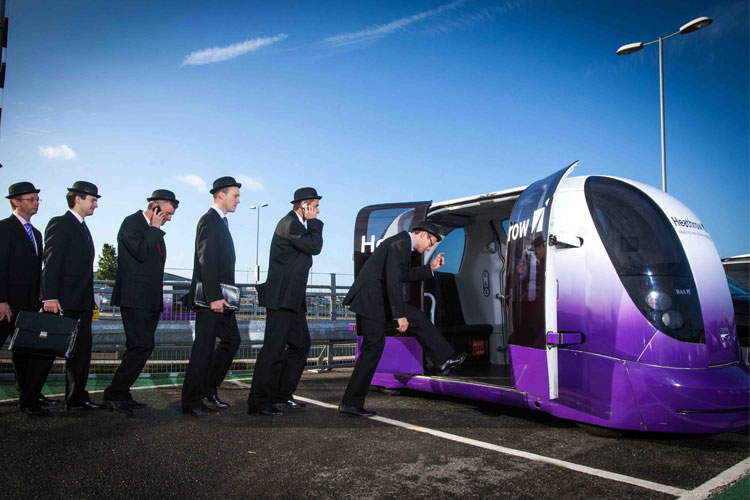Personal Rapid Transit (PRT) can reduce global transportation emissions by 12%
October 31, 2018 / 0 Comment / in Environment, Technology / by admin

Let us evaluate the potential savings in CO2 emissions reducing environmental impact from the introduction of Ultra PRT technology and the development of a global PRT industry.
How does PRT save emissions
Ultra PRT operates electric autonomous vehicles – Pods. They are more energy efficient than other forms of transport, including cars and other public transport. This is because Pods
- only travel when passengers require –empty vehicle movements are minimised.
- travel non-stop on dedicated guideways – no waiting in traffic, with shared riding
- use regenerative braking
Consequently, PRT systems generate zero emissions at point of use and make a substantial contribution to the improvement of CO2, NOX and particulates in the cities.
The electricity that they consume will generate emissions. Our plans for PRT include the generation of 50% of electricity requirements on-site through solar & wind power. Thus 50% of our power is zero emissions.
How much CO2 does PRT save.
The savings in CO2 will depend upon the source of electricity for PRT and what form of travel PRT will replace. Our calculations in this paper assume
- 50% of our power is solar&wind, and the other 50% is split 10% gas and 40% coal, reflecting our focus on India and developing Asian countries. Over the medium term (10 years), coal generation is replaced by solar or other green forms of power generation.
- If PRT was not available, the passengers would travel in cars fuelled by petrol (gasoline).
The potential savings in CO2.
Our calculations are based on the following assumptions
- A typical PRT system would use 2,000 pods in operation
- We achieve our business plan target of 85 city projects, or our ambition of 400 city projects
- The PRT industry develops and 2,000 cities in total adopt an average of 3 systems per city
PRT will save approximately 60% of CO2 emissions on current generation and 100% with future green generation. Each pod will save 28 tonnes CO2 pa (or 48 tonnes if the electricity industry moves to fully green generation).
| CO2 reduction
|
CO2 reduction
(current generation) |
CO2 reduction
(green generation) |
| Per pod (tonnes pa) | 28 | 48 |
| Per Project ( ‘000 tonnes pa) | 59 | 100 |
| Per City with 3 system each (‘mn tonnes pa) | 0.2 | 0.3 |
| 85 cities, 1 project (mn tonnes pa) | 5 | 9 |
| 400 cities, 1 project (mn tonnes pa) | 23 | 40 |
| 2,000 cities, 3 projects (mn tonnes pa) | 352 | 600 |
The savings in context
In 2015 there were 950 million passenger cars in the world. If the PRT industry reaches 2,000 cities, each with 3 projects, then this might imply 12 million pods – 1.2% of the current number of cars. But the impact on CO2 emissions is greater than the replacement of cars, due to the efficient operation of the system, and reduction of congestion.
Our calculations are based upon the project planned in Bengaluru, India, where transportation generates an estimated 6.7 mn tonnes CO2 pa. A single PRT system would save nearly 1% of the CO2 generated. If our pilot project leads to more widespread adoption of PRT across the city the savings could be substantially higher – possibly over 15%.
Total global CO2 emissions in 2017 were estimated at 33.4 billion tonnes. Transportation accounts for approximately 15% of this – around 5 bn metric tonnes. If Ultra PRT achieves its ambition of 400 cities, it would reduce global transportation CO2 emissions by up to 1% If this is a catalyst to the development of a PRT industry implementing projects in 2,000 cities, with savings of up to 600 mn metric tonnes, PRT would reduce global transportation emissions by 12%.
